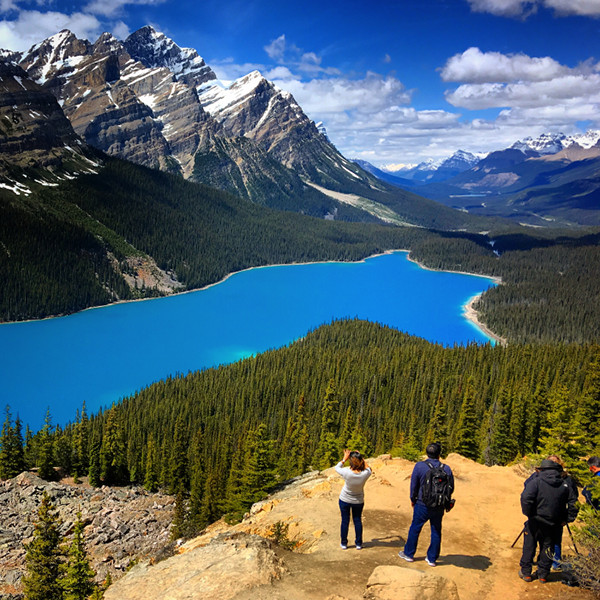
by The American Geosciences Institute Friday, July 29, 2016

Click to enlarge photo.
This lake lies in a well-known mountainous Canadian national park that takes its name from a town in Scotland and contains many glaciers and icefields. It lies along a well-traveled “icy” parkway that parallels the continental divide.
The lake, named for an early trail guide and trapper in the area, is dammed by an end moraine.
The glacial streams that feed the lake also deliver heavy loads of glacial flour — finely ground sediment produced by glacial scouring of bedrock — to which the lake owes its surreal turquoise color.
Scroll down for the answer
Answer: Peyto Lake in Banff National Park in Alberta, Canada, is fed by glacial streams that deliver heavy bedloads of glacial flour — finely ground sediment produced by glacial scouring of bedrock — which gives the lake its surreal turquoise color. Photo is by Ethan Weber. August Winners: Marie T. Grogan (Wauwatosa, Wis.) John J. Hebberger Jr. (Jackson, Wyo.) Joe St. Martin (Mystic, Conn.) Ted Schulenberg (Kerrville, Texas) Stephen Tomlin (Mount Evelyn, Victoria, Australia) Visit the Where on Earth? archive.
EARTH also welcomes your photos to consider for the contest. Learn more about submitting photos here.
© 2008-2021. All rights reserved. Any copying, redistribution or retransmission of any of the contents of this service without the expressed written permission of the American Geosciences Institute is expressly prohibited. Click here for all copyright requests.